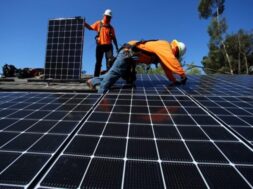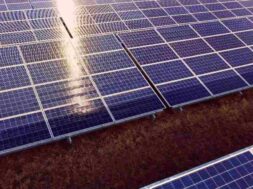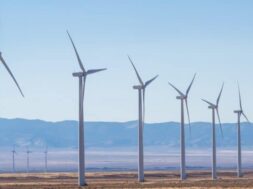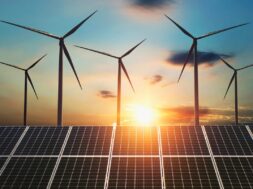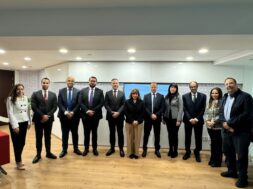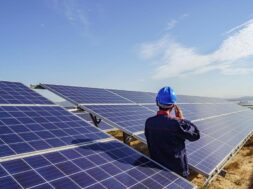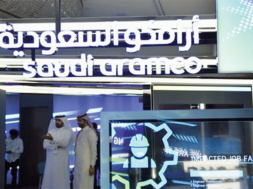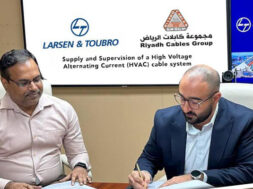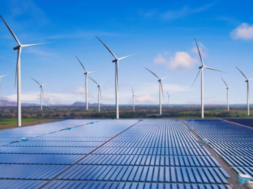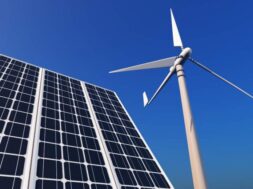
Aramco targets 12 GW wind and solar and 2 million tonnes of blue hydrogen – EQ Mag Pro
-
To produce 11 mil mt/year of blue ammonia by 2030
-
Will reduce over 50 mil mt of CO2 equivalent annually by 2035
-
Planning zero Scope 1, Scope 2 emissions from its assets by 2050
Saudi Aramco plans to invest in 12 GW of solar PV and wind projects and reduce its upstream carbon intensity by 15% by 2035 as well as produce 11 million mt/year of blue ammonia by 2030 as part of plans to achieve net-zero Scope 1 and Scope 2 greenhouse gas emissions from its assets by 2050, the company said in a report released June 15.
Aramco will reduce or mitigate more than 50 million mt of CO2 equivalent annually and is targeting to capture, utilize or store 11 million mt of CO2 equivalent annually by 2035, according to the company’s first sustainability report.
The Scope 1 emissions are direct GHG emissions that occur from sources that are controlled or owned by an organization, while Scope 2 emissions are indirect GHG emissions when the energy it purchases and uses is produced.
“Reducing emissions from energy production and use, while at the same time satisfying the world’s growing energy requirements, is the biggest dual challenge facing our industry,” Aramco chairman Yasir al-Rumayyan said in the report.
Saudi Arabia, the world’s biggest oil exporter, made a pledge last year to have net zero emissions by 2060, 10 years after Aramco’s target.
Aramco is cutting its emissions while at the same time ramping up its maximum sustainable capacity for crude oil to 13 million b/d by 2027 from 12 million b/d now.
Upstream carbon intensity
Saudi officials have long argued that demand for the country’s crude will remain strong due to the country’s low cost and low carbon production.
“In support of the corporate strategy to maintain an industry-leading position as a lowest carbon intensity major producer of oil and gas, we have set a target to reduce our upstream carbon intensity by at least 15% by 2035, against our 2018 baseline,” Aramco said. “This target accounts for anticipated increases in oil production and maximum sustainable capacity, and the expansion of our gas business.”
Aramco is planning to lower its upstream carbon intensity to at least 8.7 kgCO2e/boe by 2035, down from the baseline of 10.2 kgCO2e/boe for 2018, it said in the report.
Aramco also plans to reduce its net Scope 1 and Scope 2 GHG emissions from both the upstream and downstream businesses by 52 million mtCO2e from its business as usual 2035 forecast emissions.
“By 2035, consistent with the corporate growth strategy in oil and gas production and development of new businesses, particularly hydrogen and liquids-to-chemicals, we forecast our business as usual Scope 1 and Scope 2 GHG emissions for our wholly-owned operated assets to increase to 119 MMtCO2 e,” the company said.
“Our goal is to mitigate this growth in emissions and reduce our absolute emissions to 67 MMtCO2 e by 2035.”
Carbon offsets
In 2021, Aramco’s Scope 1 emissions rose by 4% following the start-up of the Fadhili Gas plant, while the company saw 14% decrease in Scope 2 emissions due to a shift in consumption of electricity from third-party to company-owned power generation.
Aramco, which has current upstream methane intensity of 0.05%, is committed to near zero upstream methane intensity by 2030.
The company is also seeking to earn carbon offsets credits by undertaking greenhouse gas reduction projects.
“The use of offsets is an important part of Aramco’s net-zero planning as they enable the mitigation of hard to abate emissions, by offsetting actions we have taken elsewhere, or credits we might have purchased in a carbon market,” it said.
“They also allow us to accelerate emissions reduction action, particularly where alternatives, such as CCUS, are nascent.”
Aramco also plans to become an inaugural member of the Riyadh Voluntary Exchange Platform, where trading of carbon offsets and credits produced in the Middle East and North Africa will take place.
The platform, announced last year, is an initiative of the Public Investment Fund, the country’s sovereign wealth fund, and the Saudi Tadawul Group, which owns the Saudi stock exchange.


